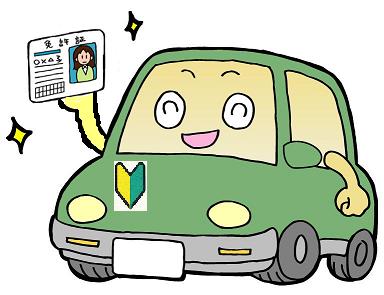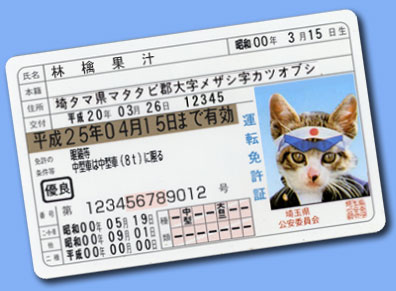For most people coming to live in Japan, driving will simply be a case of changing one’s existing licence to an International Driver’s Licence. Sometimes though, depending on which country you hail from, you may be required to take a test. For others who never learned to drive at all, the process is much longer and more intensive.

For me, that’s exactly the situation I’ve found myself in. Never needing a driver’s licence at university, I passed up the opportunity to learn before coming to Japan. Yet now I find myself wanting to drive; wanting to share the effort on long car journeys with friends and travel to remote locations that aren’t really accessible by public transport. But learning to drive in Japan is not easy. There are few English materials available outside of a select few driving schools, and the schools themselves cost an incredible amount of money to attend. So I’ve opted to learn by myself, borrowing books form friends and practising in vacant car parking areas.
The process is in roughly 4 steps. First you must take the written and practical tests in a test centre for the provisional driver’s licence, and following a suitable amount of practice, you must then also take another written and practical test out on the road to gain the full licence. Without English materials to study from though, it’s necessary to learn all the knowledge a driver needs from Japanese textbooks. So today I’d like to begin with the first in a series of posts for helping you learn to drive in Japan. There are few good resources out there on the internet to help foreigners in Japan learn to drive form scratch in Japan, so hopefully this will go some way to filling the gap.
To begin the series then, we’ll be looking at the basic terminology and key terms you’ll encounter when reading through the textbooks. Let’s go!

Types of Vehicle
Each of the below terms refer to something quite specific, and these are important for beating the trick questions in the exam. Learn them well!
Note: The word 車 is usually used to refer to ‘car’, but it actually means ‘wheel’ or ‘wheeled vehicle’. In the driver’s licence test, 車 refers to various types of vehicles like regular cars, mopeds and bicycles. 自動車, on the other hand, only refers to motorised vehicles, such as regular cars and motorbikes.
車など
くるま など
Cars (etc.)
車と路面電車。 – Cars and street trams.
車(車両)
くるま (しゃりょう)
Cars (vehicles)
自動車・原動機付自転車・軽車両・トロリーバス。 – Cars, mopeds, light vehicles and trolley buses.
自動車
じどうしゃ
Motor vehicles
原動機(エンジン)で、レールや架線を使わずに運転する車。 – Vehicles with an engine that do not travel along rails or by using overhead wires.
注意: 原動機付自転車は含まれません。 Caution: does not include mopeds.
原動機付自転車
げんどうき つき じてんしゃ
Mopeds
総排気量50cc以下のミニカー以外の車。 – Vehicles other than mini cars with an engine displacement of up to 50cc. (For most purposes this refers to two-wheeled mopeds).
軽車両
けいしゃりょう
Light vehicles
自転車(電動含む)、荷車、リヤカー、そり、牛馬など。 – Bicycles (including electric), carts, wagons, sleighs and cattle.
注意: 身体障害者用の車椅子、歩行補助車、小児用の車は含まれません。 Caution: Wheelchairs, vehicles to assistant walking and prams are not included.
That’s not all! Log in to see the rest of this lesson.
Or if you aren’t a member yet, please consider signing up.
Leave a Reply